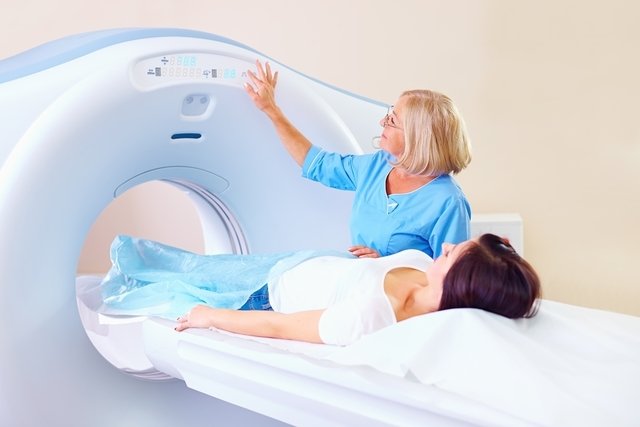The liver is the organ most susceptible to the formation of abscesses, which can be solitary or multiple, and which can arise due to the spread of bacteria through the blood or the local spread of foci of infection in the peritoneal cavity, close to the liver, such as the liver. in the case of appendicitis, diseases associated with the biliary tract or pylephlebitis, for example.
Furthermore, liver abscess is a pathology that can also be caused by protozoa, known as amoebic liver abscess.
Treatment depends on the organism causing the infection but generally consists of administering antibiotics, draining the abscess or in more serious cases, surgery may be recommended.
What are the signs and symptoms
The signs and symptoms that usually occur in people who have a liver abscess are fever and in some people, especially those with disease associated with the biliary tract, they may present signs and symptoms located in the right upper quadrant, such as abdominal pain.
In addition, chills, anorexia, weight loss, nausea and vomiting may also appear.
However, only about half of people with liver abscesses have an enlarged liver, pain on palpation in the right upper quadrant, or jaundice, meaning many people do not have symptoms that direct attention to the liver. Fever of unknown origin may be the only manifestation of liver abscess, especially in the elderly.
Possible causes
Liver abscesses can be caused by different microorganisms, such as bacteria or even fungi, which can arise due to the spread of bacteria through the blood or the local spread of foci of infection in the peritoneal cavity, close to the liver, as is the case with appendicitis. , diseases associated with the biliary tract or pylephlebitis, for example. Learn more about appendicitis and how you can identify it.
Additionally, liver abscesses can also be amoebic:
Amoebic liver abscess
Amoebic liver abscess is an infection of the liver by protozoa. The disease begins when protozoa E. histolytica penetrate through the intestinal mucosa, cross the portal circulation and reach the liver. Most patients with this disease do not present signs and symptoms or the presence of protozoa in feces.
The disease can appear months to years after traveling or living in an endemic area, so it is important to know the careful travel history to make the diagnosis. The most common symptoms are pain in the right upper quadrant, fever and liver tenderness.
The most common laboratory findings are leukocytosis, elevated alkaline phosphatase, mild anemia, and an elevated erythrocyte sedimentation rate.

What does the diagnosis consist of?
The single most reliable laboratory finding is the elevation of serum alkaline phosphatase concentration, which is generally high in people with liver abscess. In about half of cases, an increase in bilirubin and aspartate aminotransferase in the blood, leukocytosis, anemia and hypoalbuminemia may also occur.
Imaging tests are usually the most reliable in diagnosing this disease, such as ultrasound, computed tomography, indium or gallium-labeled leukocyte scintigraphy and magnetic resonance imaging. A chest x-ray may also be performed.
The diagnosis of amoebic liver abscess is based on the detection, by ultrasound or computed tomography, of one or more lesions, which occupy space in the liver, and a positive serological test for antibodies to the antigens of E. histolytica.
How the treatment is carried out
Treatment can be carried out through percutaneous drainage, with a catheter with side holes kept in place. In addition, antibiotic medicines specific to the microorganism responsible for the infection can also be used, after taking a sample of the abscess. In cases where the abscess drains, longer treatment with antibiotics is necessary.
If the infection is caused by candida, treatment usually consists of administration of amphotericin, with subsequent treatment with fluconazole. In some cases, only treatment with fluconazole can be used, particularly in clinically stable people, whose isolated microorganism is susceptible to this medicine.
For the treatment of amoebic liver abscess, medicines such as nitroimidazole, tinidazole and metronidazole can be used. So far, this protozoan has not shown resistance to any of these medications. Drainage of amoebic liver abscesses is rarely necessary.

Sign up for our newsletter and stay up to date with exclusive news
that can transform your routine!
Warning: Undefined array key "title" in /home/storelat/public_html/wp-content/plugins/link-whisper-premium/templates/frontend/related-posts.php on line 12
Warning: Undefined array key "title_tag" in /home/storelat/public_html/wp-content/plugins/link-whisper-premium/templates/frontend/related-posts.php on line 13




